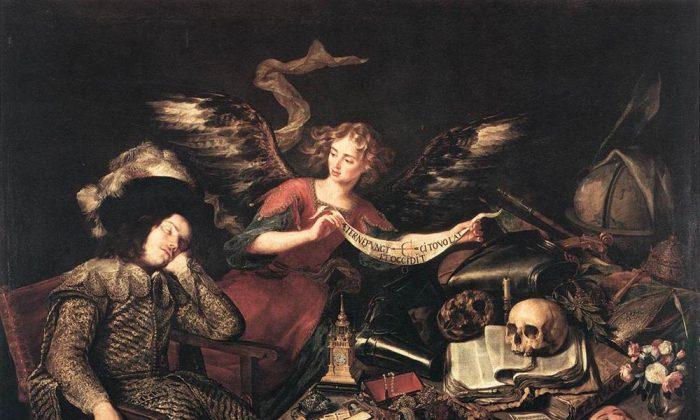What modernists have done has been to aid and abet the destruction of the only universal language by which artists can communicate our humanity. It has been a goal of mine for many years to expose the truth of modernist art history, and it is very much on topic to bring into question any practice that purports to analyze art history in a way that deliberately suppresses a valid and correct understanding of what actually happened.
And it is of the utmost importance that the history of what actually took place not be lost for all time due to the transitory prejudice and tastes of a single era. This must be done if art history as a field of scholarship is not to be ultimately discovered to have devolved into nothing more than documents of propaganda, geared toward market enhancement for valuable collections passed down as wealth-conserving stores of value.
Successful dealers, who derived great wealth by selling such works—works created in hours instead of weeks—had little trouble lining up articulate masters of our language to build complex jargon presented everywhere as brilliant analysis. These market-influenced treatises ensured the financial protection of these collections.
Such “art-speak,” as it has come to be known, is a form of contrivance that uses self-consciously complex and convoluted word combinations (babble) to impress, mesmerize, and ultimately silence the human instinct so that it cannot identify honestly what has been paraded before it.
This is accomplished by brainwashing through authority, confounding the evidence of our senses that otherwise any sane person would question. The “authority” of high positions, and the “authority” of books and print, and the “authority” of certificates of accreditation attached to the names of the chief proponents of modernism have all conspired to impress and humble those whose common sense would rise up in opposition to what would have been evident nonsense if it had emanated from the mouths and pens of anyone without such a preponderance of “authority” backing them up.
The best term for describing this phenomenon is “prestige suggestion.” Any time people or even product names hold the trappings and symbols of quality, value, or expert authority, people tend to see quality, value, or importance due to those symbols.
For example, a wealthy consumer will see a purse with the name “Prada” or “Gucci” on it and will automatically assume value and quality. Perhaps the price will be $1,800, and if it’s on sale for $1,200 she’ll believe she got a good deal and be proud to wear it on her arm and show it to friends.
Take the same bag without a label and try to sell it on a table on 42nd Street with an $80 price tag. The consumer just may think it’s overpriced and will try to get the price down perhaps to $40 if she’ll buy it at all. The Prada name and the fact that it’s being sold in Bergdorf’s or Bloomingdale’s tends to give it the prestige and assumed value that has been suggested into the mind of the consumer.
There is a difference between value due to prestige and value due to intrinsic quality. In very much the same way, canvases with little intrinsic value, which have the signature of de Kooning, Pollock, Rothko, or Mondrian, are assigned high value because people with a Ph.D. or Museum Director next to their names have told us what to think about their value, or major dealers or auction houses have assigned estimates of millions of dollars to their work and told people how paying a million dollars today could lead to a $10 million profit in the future.
Most people do not feel themselves knowledgeable to know what has value or does not have value when it comes to pocketbooks, Persian carpets, or wrist watches, and much the less so with works of art. So even if their instincts are to reject something, they keep silent lest they expose themselves to ridicule or being considered ignorant.
Prestige suggestion causes people to assume automatically that a work must be great if it is by any of the “big names” of modern art, so they at once start looking for greatness. If they don’t see greatness, they are made to believe that it is due to their ignorance or lack of artistic sensibilities, but never because, just maybe, there is some failing in the art work.
To acknowledge doubt is to make oneself vulnerable to ridicule and derision. It’s so much easier to go along to get along.
Students operating under that kind of intimidating pressure, you can be sure, will find greatness no matter what they are looking at. The reverse of this has been trained into them when they view academic paintings. They have been taught that works exhibiting realistic rendering are “bad” art, and therefore any good that is seen is not due to qualities in the artistic accomplishment but is rather due to a lack of intelligence and taste in the viewer.
So many students and even teachers have written and told us how realism has been virtually or actually banned from their art departments. John Stuart Mill’s remarks on this very issue (the tendency to not debate, confront, or to completely ignore differing views) are as alive and pertinent today as they were 200 years ago.
However unwillingly a person who has a strong opinion may admit the possibility that his opinion may be false, he ought to be moved by the consideration that true it may be, if it is not fully, frequently, and fearlessly discussed, it will be held as a dead dogma, not a living truth.
Without a dynamic, living coterie of experts teaching traditional techniques in drawing and painting, it will never be possible for college art departments to have students who are able to enrich the debate and the academic environment for all students by producing works of art that are capable of expressing complex and subtle ideas.
To forbid these skills to be taught on campus in any real depth is as ridiculous as having a music department that refuses to teach the circle of fifths or only teaches three or four notes from which they insist all music must be composed.
If there was nothing to be ashamed of in their teaching methods and in their results, they would welcome the chance to confront the ideas that they should be well-equipped to refute. They have a solemn duty to maintain the integrity of thought made possible by what has been handed down to them by those artists, writers, and thinkers of the 19th century and before, who established a system where freedom of thought would prevail.
And where is it more important to vouchsafe these principles than at our nation’s colleges and universities that are training the next generation of leaders? Even if they don’t agree, they have a duty to expose their students to responsible opposing views.
This is Part 10 of an 11-part series presenting the speech given by Frederick Ross at the February 7, 2014, Artists Keynote Address to the Connecticut Society of Portrait Artists. Frederick Ross is chairman and founder of the Art Renewal Center (www.artrenewal.org).




Friends Read Free